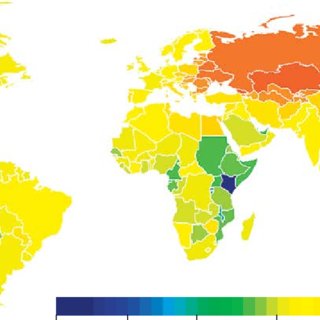1 in 10 global cardiovascular deaths due to high sodium intake
1 in 10 global cardiovascular deaths due to high sodium intake
The examination group, drove by Dr. Dariush Mozaffarian of the Friedman School of Nutrition Science and Policy at Tufts University in Medford, MA, as of late distributed their discoveries in The New England Journal of Medicine.
Sodium is a component that happens normally in many food varieties, like table salt, milk, beets and celery. It is likewise included high adds up to handled food varieties, including bread and handled meats.
A lot of dietary sodium can increment pulse, and hypertension is a significant gamble factor for cardiovascular sicknesses, like coronary illness and stroke.
"Notwithstanding," says Dr. Mozaffarian, "the impacts of abundance sodium consumption on cardiovascular infections worldwide by age, sex, and country had not been deep rooted."
Overabundance sodium admission owing to 1.65 million cardiovascular passings around the world
To acquire a superior understanding into what overabundance dietary sodium means for cardiovascular wellbeing on a worldwide scale, the examination group broke down information from 205 reviews of sodium consumption addressing roughly 75% of the world's grown-up populace.
They likewise surveyed worldwide nourishment information to perceive how sodium admission changes by sex, age and country. Besides, they led pooled meta-investigations to quantify the impacts of sodium on pulse, and independently, the impacts of circulatory strain on cardiovascular infections.
The group's discoveries were applied to ebb and flow worldwide paces of cardiovascular sicknesses, and they utilized this data to assess the number of passings that are brought about by sodium admission over 2 g each day.
Consequences of the review uncovered that the normal overall sodium consumption in 2010 was 3.95 g each day - practically twofold the everyday proposal set by the World Health Organization (WHO).
All overall areas had sodium admissions over the WHO proposal. These went from 2.18 g each day in sub-Saharan Africa to 5.51 g each day in Central Asia.
This overabundance sodium admission was owing to 1.65 million cardiovascular-related passings around the world - the comparable to 1 out of 10 passings from cardiovascular causes.
The analysts found that 4 out of 5 worldwide passings owing to overabundance sodium admission happened in low-and center pay nations.
How is the US impacted by sodium admission?
The typical everyday sodium consumption in the US was practically 80% higher than the WHO suggestion, at 3.6 g, and fundamentally higher than the 2.3 g each day admission suggested by the central government's Dietary Guidelines for Americans.
Also, the specialists found that everyday sodium admission over 2 g represents around 58,000 cardiovascular-related passings in the US every year.
"Projects to decrease sodium admission could give a useful and savvy implies for diminishing unexpected losses in grown-ups all over the planet," adds Powles.
The group takes note of that their review is dependent upon certain limits. For instance, assessments of sodium admission depended on pee tests, which might have underrated genuine sodium utilization.

.jpeg)


Comments
Post a Comment